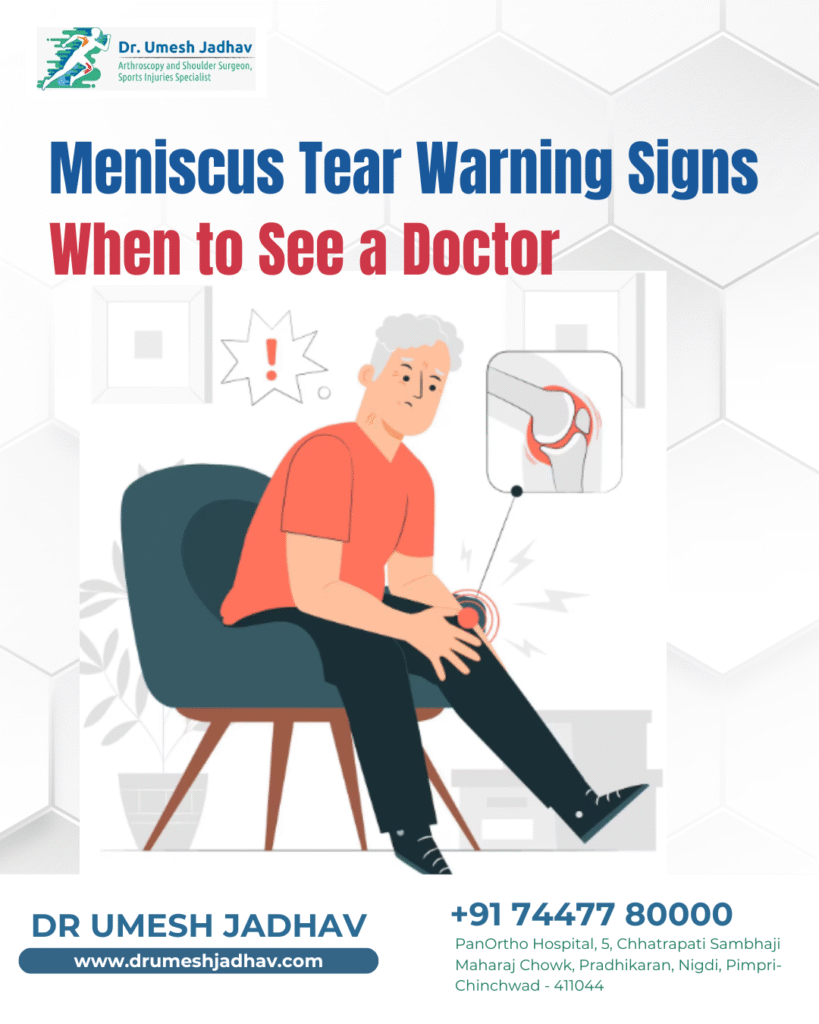A meniscus tear is one of the most common knee injuries, especially among athletes and older adults. The meniscus is a C-shaped piece of cartilage that acts as a cushion between your thighbone and shinbone. A tear can cause pain, swelling, and restricted movement — but how do you know when it’s more than just a strain or minor injury? Before the condition worsens, consult an orthopedic specialist near you for early evaluation, expert guidance, and the right treatment.
In this blog, we explain the key consequences of a meniscus tear and why timely treatment matters. Don’t let a small tear turn into a big problem — know the signs, act early!
What Causes a Meniscus Tear?
Meniscus tears can occur due to:
-
Sudden twisting or pivoting movements (common in sports)
-
Heavy lifting or squatting
-
Age-related degeneration
-
Repetitive stress on the knee joint
Common Symptoms of a Meniscus Tear
A minor tear may only cause mild discomfort, but more serious tears often lead to:
-
Sharp pain in the knee, especially during movement
-
Swelling that develops within the first 24–48 hours
-
Stiffness or limited range of motion
-
Clicking or locking sensation in the knee
-
Instability, feeling like the knee might give way
When to See a Doctor
If you’re experiencing any of the following, it’s time to consult an orthopedic specialist:
-
Persistent pain that doesn’t improve with rest or ice
-
Swelling that worsens or does not subside in a few days
-
Difficulty bending, straightening, or bearing weight on the leg
-
Feeling of the knee locking or catching
-
Recurrent instability during walking or physical activity
Why Early Diagnosis Matters
Delaying treatment may lead to:
-
Worsening of the tear
-
Long-term knee damage
-
Reduced joint function
-
Arthritis in the affected knee
An orthopedic evaluation may include a physical exam, MRI, or X-ray to assess the severity and guide the treatment plan.
Treatment Options
Depending on the type and severity of the tear, treatments may include:
-
Rest, Ice, Compression, Elevation (RICE)
-
Physiotherapy to strengthen surrounding muscles
-
Medications for inflammation and pain
-
Surgical options such as arthroscopic repair or partial meniscectomy in severe cases
Knee pain should never be ignored, especially when accompanied by locking, swelling, or instability. Early diagnosis and treatment of a meniscus tear can lead to faster recovery and reduce the risk of long-term damage.
Conclusion
A meniscus tear may start with mild discomfort, but ignoring the warning signs can lead to long-term knee damage and limited mobility. If you’re experiencing persistent pain, swelling, or instability in your knee, it’s important to seek medical attention promptly. Early diagnosis and the right treatment plan — whether conservative or surgical — can make all the difference in your recovery. For meniscus tear treatment, you can consult Dr. Umesh Jadhav, who has 24 years of experience in treating knee, arthritis, shoulder, and other joint-related issues. He is the best orthopedic surgeon and doctor in Nigid, PCMC and a specialist in sports medicine.
Think it might be more than just a strain? Don’t wait — consult a knee specialist today and take the first step toward pain-free movement.

